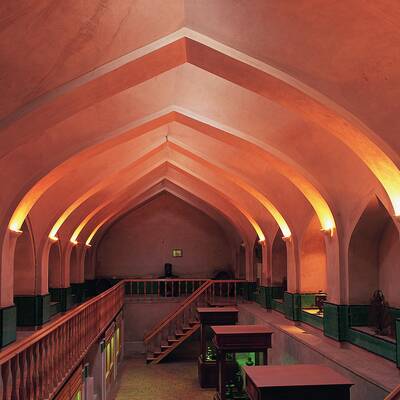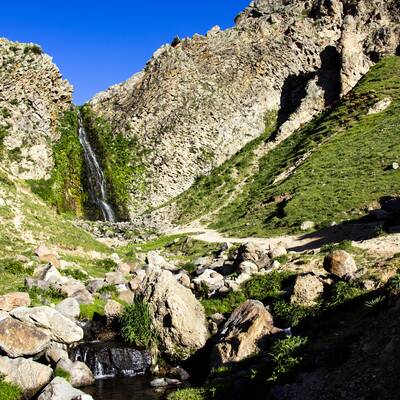
Ardabil Great Mosque
ArdabilArdabil Great Mosque, which is also referred to as Masjid Jameh in some resources, is the remaining part of a great complex that has been built during different historical eras. But the high tide of the constructions was related to the Seljuk dynasty. Although this place was originally a worship house that belonged to pre-Islamic years in Iran. It was used as a fire temple of Parthian Empire.
The sections of yard, the glorious dome of the mosque and its iwan have been destroyed during the attack of the Mongols and only parts of the complex have remained as a heritage for next generations. They include the dome and iwan of the great mosque. The brick cylinder minaret of this mosque is reminiscent of Seljuk era.
Since the construction of Ardabil Great Mosque goes back to years before Seljuk dynasty, its plan is not designed based on the popular four-iwans of this era. Under the dome, corridors and vestibules are located that, based on exact calculations, facilitated the commute of people and were used during religious gathering. These corridors can be seen as an intersection. Each of them is about two meters long.
The main space of the mosque is in the form of a square that has been decorated with Ghatarbandi that is a form of stucco, and mosaic faience in each corner of the hall, there are squinches decorated with big motifs, and have rectangular holes that pass through the light into the space and add to the lightness of the altar.
The wooden panels of the beam ceiling are one of the attractive features of this structure. They are fifteen meters placed on nine wooden logs and the set is positioned on stone pillars. In the entrance, distinguished by the embossed metallic decorations, there is a tablet on top.
The other section of the building is an old mosque that consists of one dome and four rooms. It is made from bricks and has a small amount of tile works.
The east and west side of the dome have three arches. Inside each of them, there are three narrow pathways that lead into different parts such as chapel and prayer hall. The iwan next to the dome is another section that is used by local people. This iwan is connected by the corridors to the altar on the south and to underground pathways on the west and east side of the building. Those who are interested in ancient edifices are recommended to visit the Ardabil Great Mosque.
.jpg)


